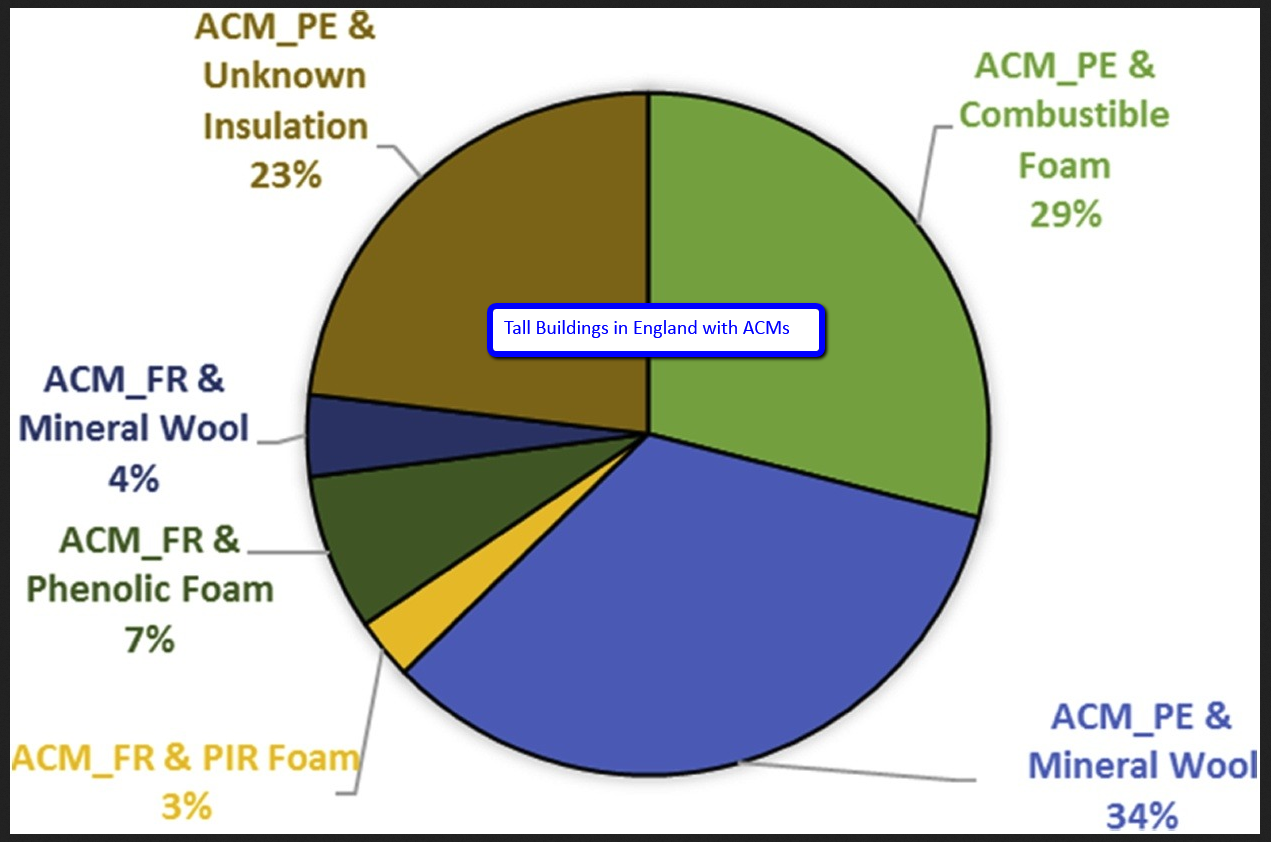
Understanding Grenfell ~ Fire behaviour of modern façade materials
The first in-depth study of the cladding and insulation used on Grenfell Tower has uncovered significant differences in flammability and smoke toxicity between the products used and least combustible products available, helping to explain the rapid spread of flames within the tower’s façade.
Researchers at the University of Central Lancashire (UCLan) showed that the polyethylene-filled aluminium composite material (ACM) panels used on the tower were 55 times more flammable than the least flammable panels tested. Smoke released when burning polyisocyanurate (PIR) insulation was also found to be 15 times more toxic than current fire-safe insulation products, with just 1kg of burning PIR insulation being sufficient to fill a 50m³ room with an incapacitating and ultimately lethal mix of carbon monoxide and hydrogen cyanide gas.
Published in the Journal for Hazardous Materials, the research found that the combination of ACM panels and PIR insulation resulted in the highest flammability and smoke toxicity of products currently available.
LINK TO THE FULL ARTICLE
Used together, the ACM forced rapid ignition of the toxic foam. Just a few burning drips of polyethylene from the ACM paneling would be enough to ignite the foam insulation, which could provide a new explanation for the very rapid spread of flames within the tower’s façade.
These new findings also highlight the dangers with High-Pressure Laminate (HPL) materials – a popular alternative to the cladding used on Grenfell Tower, and the material which contributed to the death of six people during the 2009 Lakanal House fire. Test results revealed that when set alight, it had 25 times greater heat release rate, and released 115 times more heat compared to the least flammable panel products available.
"Our research demonstrates the need for tighter regulations around flammable and toxic building products, especially when used on towers or buildings with vulnerable occupants, as this could put lives at serious risk"
Richard Hull, author of the study and Professor of Chemistry and Fire Science at UCLan, commented: “Our research demonstrates the need for tighter regulations around flammable and toxic building products, especially when used on towers or buildings with vulnerable occupants, as this could put lives at serious risk.
“The tests that we have carried out provide crucial evidence around the large differences in the fire safety of construction products used on UK buildings, and have clear implications for regulators to ensure the fire safety of occupants living in these buildings.
“Even though the government has recently banned combustible materials from some high-rise buildings in England, regulators need to consider the fire safety of all buildings with combustible façades.”
This study was published in the Journal for Hazardous Materials and the full paper can be accessed here.
https://doi.org/10.1016/j.jhazmat.2018.12.077
ICM Director David Jones notes the aim of this excellent paper was to assess the fire safety of combinations of typical rainscreen façade products using micro-scale decomposition and bench-scale fire behaviour and toxic product evolution. The results are related to the large-scale government tests, following the Grenfell fire, on 8 m rainscreen façade systems.
David Jones is sad and angry to note that if the data in this paper had been readily available, it may have contributed to the prohibition of combustible materials on the outside of tall buildings far sooner, as they are in most of Europe, and this tragedy could not have occurred! In the UK, the building fire regulations have just been modified to ban the use of combustible materials on the outside of tall buildings (November 2018) ...
Ed.
